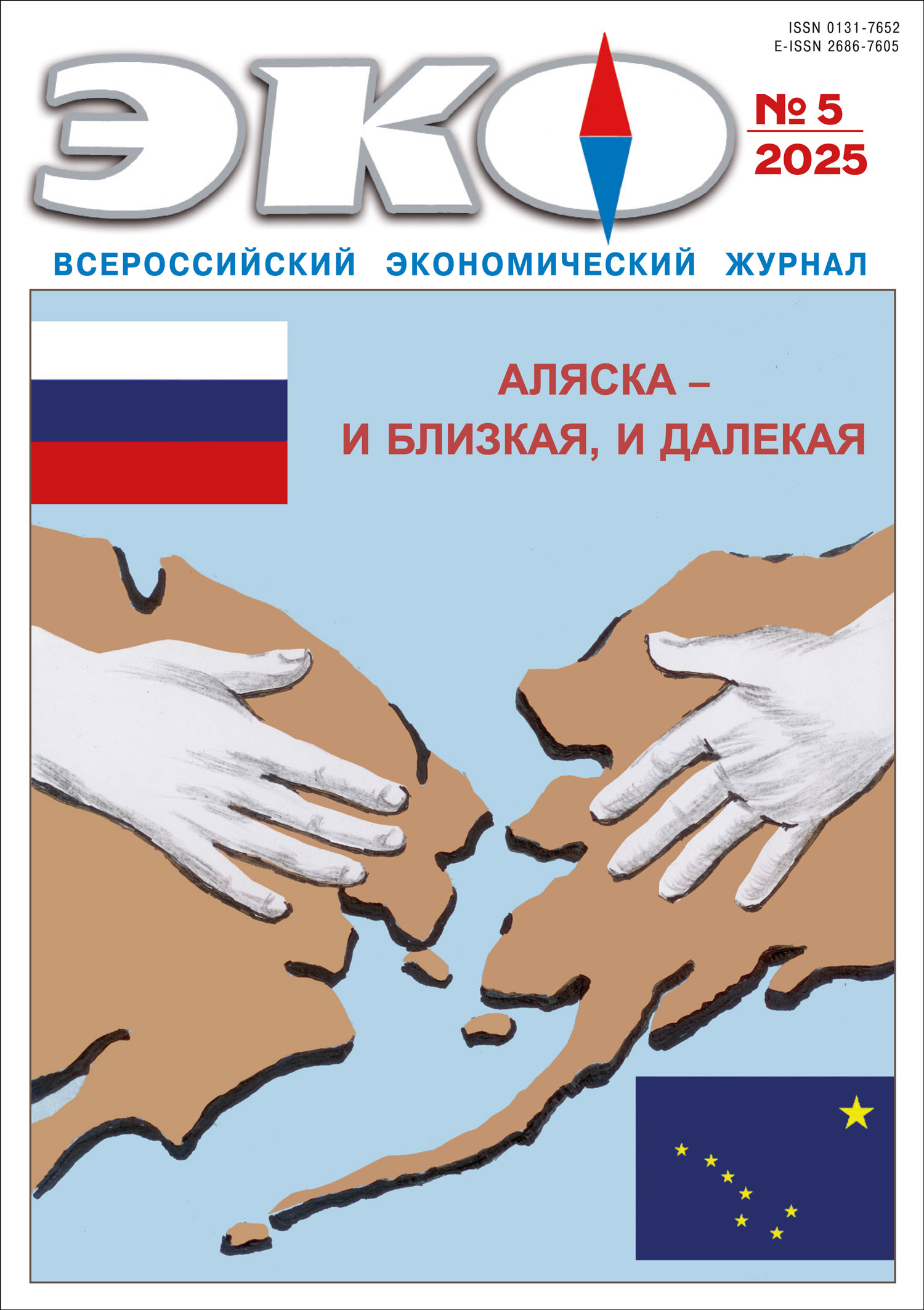REGIONAL DEVELOPMENT
The Yurga Ring: The Concept of Interregional Development Corridor as Part of Kuzbass Economic Transformation
Published 2025-10-06
Keywords
- Kuzbass; strategy; transformation; transregionalism; development corridor; logistic hub; engineering; innovation
How to Cite
1.
Fridman Ю, Loginova Е, Rechko Г. The Yurga Ring: The Concept of Interregional Development Corridor as Part of Kuzbass Economic Transformation. ECO [Internet]. 2025 Oct. 6 [cited 2025 Dec. 8];55(5):98-116. Available from: https://ecotrends.ru/index.php/eco/article/view/4900
Abstract
The economy of Kuzbass (Kemerovo Region), which is now Russia’s largest coal-industrial region, is going through severe turbulence. This is triggered by the ongoing changes in the configuration of the global and Russian economies. The Kemerovo Oblast’s obvious response to this threat is to transform the socio-economic system of the region in order to abandon its coal export-oriented development model. This paper continues the authors’ research cycle on Kuzbass development problems and considers the possibility of using a transregional approach to transform its economy. We propose the concept of a development corridor centered in the city of Yurga (the so-called “Yurga Ring”). It includes a set of spatial and sectoral solutions in the field of logistics, engineering and innovation, aimed at stimulating investment and supporting non-coal industries in the Kemerovo region – on the basis of interregional and, more broadly, international cooperation. According to the authors, the implementation of these initiatives can give an impetus to development of Kuzbass as the core of Siberia’s economic ties.References
- Антонова И.С. Теория диверсификации экономики моногорода // Вестник науки Сибири. 2015. № 2 (17). С. 179–193.
- Бриллиантов Н.Д. Коридоры развития: теоретические аспекты и международный опыт // Российский внешнеэкономический вестник. 2022. № 1. С. 110–123. DOI: 10.24412/2072–8042–2022–1–110–123
- Галкин Н.В. История Юрги: в 2 ч. Кемерово: Кузбассвузиздат, 2001. 472 с.
- Ефремова К.А. От регионализма к трансрегионализму: теоретическое осмысление новой реальности // Сравнительная политика. 2017. № 2. С. 58–72. DOI: 10.18611/2221–3279–2017–8–2–58–72
- Иванова О.П., Антонова И.С. Моногород Юрга Кемеровской области: инвестиционная привлекательность проектов диверсификации экономики // ЭКО. 2011. № 6. С. 158–170.
- Крюков В.А., Фридман Ю.А., Логинова Е.Ю., Речко Г.Н., Хохрина О.И. Стратегии развития Кузбасса в контексте концепции ревитализации старопромышленного региона // Экономика региона. 2024. Т. 20 (4). С. 978–992. DOI: 10.17059/ekon.reg.2024–4–1
- Кузнецов Д.А. От региональной интеграции к трансрегиональной: к постановке теоретической проблемы // Ученые записки Крымского федерального университета имени В.И. Вернадского. Философия. Политология. Культурология. 2019. Т. 5, № 1. С. 94–103.
- Кузнецов Д.А. Феномен трансрегионализма: проблемы терминологии и концептуализации // Сравнительная политика. 2016. № 2. С. 14–25. DOI: 10.18611/2221–3279–2016–7–2(23)-14–25
- Лебедева М.M. Современные мегатренды мировой политики // Мировая экономика и международные отношения. 2019. Т. 63, № 9. С. 29–37. DOI: 10.20542/0131–2227–2019–63–9–29–37
- Лебедева М.М., Кузнецов Д.А. Трансрегионализм – новый феномен мировой политики // Полис. Политические исследования. 2019. № 5. С. 71–84. DOI: 10.17976/jpps/2019.05.06
- Лузянин С.Г., Афонасьева А.В. Один пояс, один путь – политические и экономические измерения // Вестник Томского государственного университета. Экономика. 2017. № 40. С. 5–14. DOI: 10.17223/19988648/40/1
- Намжилова В.О. Экономические коридоры на евразийском пространстве: инициативы Китая и мировой опыт // Россия и АТР. 2018. № 1. С. 65–81.
- Прохоренко И.Л. Новый регионализм и трансформация международного порядка // Пути к миру и безопасности. 2015. № 2. С. 20–28.
- Фридман Ю.А., Логинова Е.Ю., Речко Г.Н., Хохрина О.И. Диверсификация экономики Кузбасса: концепция коридоров развития // Журнал Сибирского федерального университета. Гуманитарные науки. 2023. Т. 16, № 9. С. 1576–1583.
- Хейфец Б.А. Трансрегиональное переформатирование глобального экономического пространства. Вызовы для России. М.: Институт экономики РАН, 2016. 86 с.
- Юрга и юргинцы. Портрет города. Юрга: ООО «Печатные системы», 2004. 100 с.
- Börzel, T., Risse, T. (Eds.) (2016). The Oxford Handbook of Comparative Regionalism. Oxford University Press. 667 p.
- Fridman, Yu.A., Rechko, G.N., Loginova, E.Yu. (2024). Forecast for the Resilience of the Kuzbass Economy in Conditions of Systemic Challenges in the Context of Coal Mining Development. Regional Research of Russia. Vol. 14. Is. 4. Pp. 598–607. DOI: 10.1134/S2079970524600562
- Hänngi, H., Roloff, R., Rüland, J. (2006). Interregionalism and International Relations. London; New York: Routledge. 304 p.
- Hope, A., Cox, J. (2015). Topic Guide: Development Corridors. xii + 62 pp. Available at: https://assets.publishing.service.gov.uk/media/57a08995e5274a31e000016a/Topic_Guide_Development_Corridors.pdf (accessed: 12.02.2025).
- Rüland, J. (2010). Balancers, Multilateral Utilities or Regional Identity Builders? International Relations and the Study of Interregionalism. Journal of European Public Policy. No. 17. Рp. 1271–1283. DOI: 10.1080/13501763.2010.513586
- Voskressenski, A.D. (2017). Non-Western Theories of International Relations: Conceptualizing World-Regional Studies. Springer Global (Europe-America): Palgrave Macmillan. 270 p.

